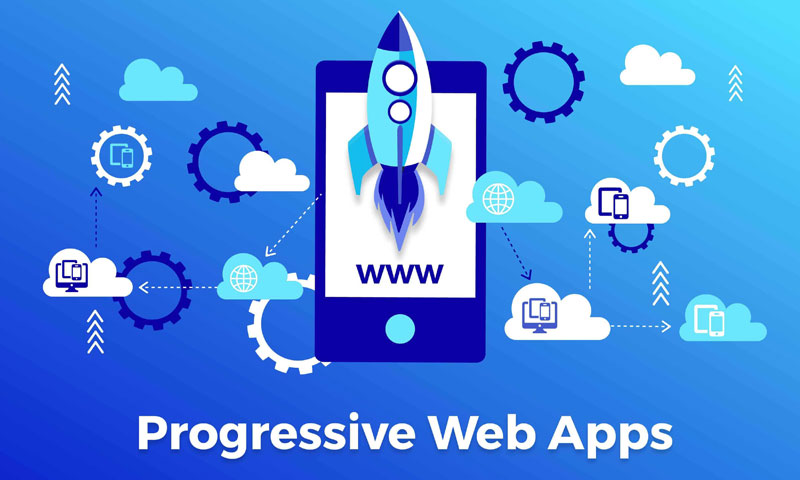What is a Progressive Web App (PWA) and How Can It Help Your Business?
A Progressive Web App (PWA) is a type of web application that combines the best features of both web and mobile applications. It is designed to provide a user experience that is similar to a native mobile application, while still being accessible through a web browser.
PWAs are designed to be reliable, fast, and engaging, providing users with an app-like experience. They are built using modern web technologies such as HTML, CSS, and JavaScript, and are designed to be responsive, meaning they can be used on any device, regardless of screen size.
PWAs can help businesses in a variety of ways. They can provide a more engaging user experience than traditional web applications, as they are designed to be more interactive and responsive. Additionally, PWAs can be used to reach a wider audience, as they are accessible on any device. This can help businesses reach more potential customers, as well as increase customer engagement.
PWAs can also help businesses save money, as they require less development time and resources than native mobile applications. Additionally, PWAs can be updated quickly and easily, allowing businesses to quickly make changes and improvements to their applications.
Overall, PWAs can provide businesses with a number of benefits, including increased customer engagement, a wider reach, and cost savings. As such, they can be a great way for businesses to improve their web presence and reach more customers.
How to Leverage the Benefits of Progressive Web Apps (PWA) for Your Business
Progressive Web Apps (PWA) are a powerful tool for businesses to leverage in order to increase customer engagement and improve user experience. PWAs are web applications that are designed to look and feel like native mobile applications, but are built using web technologies such as HTML, CSS, and JavaScript. They are designed to be fast, reliable, and engaging, and can be used to deliver a seamless user experience across multiple devices.
The benefits of PWAs for businesses are numerous. They can help to increase customer engagement by providing a more immersive and interactive experience than traditional web applications. PWAs are also more reliable than traditional web applications, as they are designed to work offline and can be accessed from any device. Additionally, PWAs are more secure than traditional web applications, as they are served over a secure HTTPS connection.
PWAs can also help businesses to reduce development costs. Since PWAs are built using web technologies, they can be developed quickly and cost-effectively. Additionally, PWAs can be deployed quickly and easily, as they do not require any special installation or configuration.
Finally, PWAs can help businesses to increase their reach. Since PWAs are designed to work across multiple devices, they can be used to reach a wider audience than traditional web applications. Additionally, PWAs can be indexed by search engines, which can help to increase visibility and drive more traffic to a business’s website.
In conclusion, PWAs offer a number of benefits for businesses. They can help to increase customer engagement, reduce development costs, and increase reach. By leveraging the power of PWAs, businesses can create a more engaging and immersive user experience, while also reducing costs and increasing their reach.
The Benefits of Progressive Web Apps (PWA) for Your Business
Progressive Web Apps (PWA) are a new type of web application that combines the best of both web and mobile applications. They are designed to provide a more engaging and immersive user experience, while also providing businesses with a cost-effective way to reach their customers.
The benefits of PWA for businesses are numerous. Firstly, PWAs are designed to be fast and reliable, providing users with a seamless experience regardless of their device or connection. This means that customers can access your business’s services quickly and easily, without having to wait for slow loading times or unreliable connections.
Secondly, PWAs are designed to be highly responsive, meaning that they can adapt to different screen sizes and devices. This ensures that customers can access your business’s services on any device, regardless of whether they are using a laptop, tablet, or smartphone.
Thirdly, PWAs are designed to be secure, providing customers with a safe and secure environment to access your business’s services. This means that customers can trust that their data is safe and secure, and that their transactions are secure.
Finally, PWAs are designed to be cost-effective. They require less development time and resources than traditional web applications, meaning that businesses can save money on development costs. Additionally, PWAs can be deployed quickly and easily, meaning that businesses can get their services up and running quickly and easily.
Progressive Web Apps (PWA) offer businesses a cost-effective way to reach their customers, while providing them with a fast, reliable, and secure experience. By leveraging the benefits of PWAs, businesses can save money on development costs, while providing their customers with a seamless and engaging experience.
How to Create a Progressive Web App (PWA) for Your Business
A Progressive Web App (PWA) is a type of web application that combines the best of both web and mobile applications. It is designed to provide a user experience that is similar to a native mobile application, while still being accessible through a web browser. PWAs are becoming increasingly popular for businesses, as they offer a cost-effective way to reach customers on multiple platforms.
Creating a PWA for your business can be a straightforward process. Here are the steps you need to take to get started:
1. Choose a Framework: The first step is to choose a framework for your PWA. Popular frameworks include React, Angular, and Vue.js. Each framework has its own advantages and disadvantages, so it’s important to do your research and choose the one that best suits your needs.
2. Design Your App: Once you’ve chosen a framework, you’ll need to design your app. This includes creating a user interface, deciding on features, and writing code. It’s important to keep in mind that PWAs should be designed with mobile users in mind, as they will be the primary users of your app.
3. Test Your App: Once you’ve designed your app, it’s important to test it thoroughly. This includes testing for bugs, compatibility with different browsers, and performance. It’s also important to test the app on different devices, as this will help you ensure that it works properly on all platforms.
4. Deploy Your App: Once you’ve tested your app and are satisfied with the results, you can deploy it. This involves hosting the app on a server and making it available to users.
Creating a PWA for your business can be a great way to reach customers on multiple platforms. By following these steps, you can create a PWA that is both user-friendly and cost-effective.
The Future of Progressive Web Apps (PWA) and How They Can Help Your Business
Progressive Web Apps (PWAs) are a new type of web application that combines the best of both web and mobile applications. PWAs are designed to provide a more engaging and immersive user experience than traditional web applications, while also providing the same level of functionality and performance as native mobile applications.
PWAs are built using modern web technologies such as HTML5, CSS3, and JavaScript. This allows them to be accessed from any device, regardless of operating system, and to be installed on the user’s device for offline use. PWAs also offer features such as push notifications, background synchronization, and offline caching, which make them more reliable and engaging than traditional web applications.
The benefits of PWAs for businesses are numerous. PWAs are faster to develop and deploy than native mobile applications, and they can be used to reach a wider audience. They are also more cost-effective than native mobile applications, as they require less maintenance and can be updated more quickly. Additionally, PWAs are more secure than traditional web applications, as they are served over HTTPS and can be hosted on secure servers.
PWAs are also more engaging than traditional web applications, as they offer features such as push notifications, background synchronization, and offline caching. This allows businesses to provide a more personalized experience to their users, as well as to keep them engaged with the latest content and updates.
Finally, PWAs are more discoverable than traditional web applications, as they can be indexed by search engines and can be shared via social media. This makes them more visible to potential customers, and increases the chances of them being discovered and used.
In conclusion, PWAs offer numerous benefits to businesses, including faster development and deployment, cost-effectiveness, security, engagement, and discoverability. As such, they are an ideal solution for businesses looking to provide a more engaging and immersive user experience, while also reaching a wider audience.
How to Optimize Your Progressive Web App (PWA) for Maximum Performance and Benefits
Progressive Web Apps (PWAs) are a powerful tool for businesses to increase their reach and engagement with customers. PWAs offer a range of benefits, including improved performance, enhanced user experience, and increased engagement. However, to maximize the benefits of PWAs, it is important to optimize them for maximum performance. Here are some tips to help you optimize your PWA for maximum performance and benefits.
1. Use a Service Worker: A service worker is a script that runs in the background and enables PWAs to work offline and provide a more reliable experience. It also helps to improve performance by caching assets and data, allowing for faster loading times.
2. Optimize Your App Shell: The app shell is the core of your PWA and should be optimized for maximum performance. This includes optimizing the HTML, CSS, and JavaScript to reduce the size of the app shell and improve loading times.
3. Leverage Caching Strategies: Caching is an important part of optimizing your PWA for performance. Leverage caching strategies such as caching static assets, caching dynamic data, and using a content delivery network (CDN) to ensure that your PWA is always up-to-date and loading quickly.
4. Use Web Push Notifications: Web push notifications are a great way to engage with users and keep them informed about new content or updates. Leverage web push notifications to keep users engaged and informed about your PWA.
5. Optimize for Mobile: Mobile devices are the most popular way to access the web, so it is important to optimize your PWA for mobile devices. This includes optimizing the design and layout for mobile devices, as well as optimizing the code for maximum performance.
By following these tips, you can optimize your PWA for maximum performance and benefits. Optimizing your PWA will help to improve user experience, increase engagement, and ensure that your PWA is always up-to-date and loading quickly.





